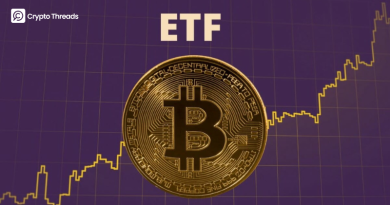How to Mine Cryptocurrency: A Comprehensive Guide
Introduction to Cryptocurrency Mining
Cryptocurrency mining can be understood simply as “digging” for digital gold – but instead of using shovels, we use powerful computers to solve complex mathematical problems. This process not only creates new cryptocurrency but also plays a crucial role in securing the entire blockchain network.
Imagine blockchain as a massive ledger book that many people write in together. To ensure no one cheats, the system presents difficult mathematical puzzles. Whoever solves it first gets the right to add a new page to the book and receives a reward. This is essentially what cryptocurrency mining is all about.
Understanding Mining Mechanisms in Depth
Proof of Work (PoW)
The mining mechanism operates on a principle called “Proof of Work” (PoW). Think of it as a global puzzle-solving competition that runs 24/7. Whenever new transactions need confirmation, the system presents a complex cryptographic problem.
What’s fascinating is that these problems are extremely difficult to solve but very easy to verify the answer. It’s like spending hours solving a difficult sudoku puzzle, but only needing seconds to check whether the solution is correct.
Why Specialized Hardware is Necessary
Initially, people could mine bitcoin using regular personal computers. However, as more people joined the network, the difficulty of these problems increased significantly. This forced miners to upgrade to specialized devices called ASICs (Application-Specific Integrated Circuits).
An ASIC is like a sledgehammer designed specifically for driving nails – it does only one thing but does it extremely efficiently. While regular computers can perform many different tasks, ASICs are completely optimized for solving specific mining algorithms.
Essential Equipment and Tools
Choosing the Right Hardware
Selecting mining equipment depends on the type of cryptocurrency you want to mine. Each type of coin uses a different algorithm, much like each type of lock needs its own specific key.
For Bitcoin, you need specialized ASIC miners because the SHA-256 algorithm is extremely complex. These machines can cost anywhere from thousands to tens of thousands of dollars, but they deliver superior performance.
For other coins like Ethereum Classic or Ravencoin, you can use high-quality graphics cards (GPUs). GPUs are more flexible than ASICs and can switch between different types of coins when needed.
Mining Strategy: Solo vs Pool
Solo mining is like buying lottery tickets – you have a chance to win a big jackpot but the probability is very low. In contrast, pool mining is like multiple people pooling money to buy lottery tickets together and sharing the winnings equally.
Most beginning miners choose pool mining because it provides more stable income. Instead of waiting for luck to solve a complete block, you receive small but regular rewards based on your contributed work.
Mining Software
After acquiring hardware, you need software to “control” your mining equipment. Popular software like CGMiner or BFGMiner acts as an interface between your hardware and the blockchain network. They allow you to monitor performance, adjust speeds, and control equipment temperature.
Step-by-Step Mining Process
Step 1: Research and Preparation
Before starting, spend time thoroughly researching the cryptocurrency you want to mine. Each coin has unique characteristics regarding algorithms, block creation time, and reward structure. This is like needing to understand the rules before joining a new game.
Step 2: Infrastructure Setup
Cryptocurrency mining consumes enormous amounts of electricity and generates significant heat. You need to prepare a space with good cooling systems and stable power supply. Many professional miners invest in dedicated air conditioning systems and backup power sources.
Step 3: Installation and Configuration
After installing hardware, you need to install mining software and connect to a pool (if choosing pool mining). This process requires entering technical parameters like server addresses, connection ports, and cryptocurrency wallet information.
Step 4: Optimization and Monitoring
Effective mining requires continuous adjustments. You need to monitor metrics like hashrate (calculation speed), equipment temperature, and power consumption. This is like driving a car – you need to constantly observe and adjust to achieve optimal performance.
Risk and Profit Analysis
Risks to Consider
Cryptocurrency mining carries many risks that you need to understand clearly before starting. First is price volatility risk. Cryptocurrency prices can change dramatically in short periods, directly affecting your profitability.
Technical risks are also significant concerns. Mining equipment operates continuously under harsh conditions and is prone to breakdowns. A single equipment failure can cause you to lose income for days or weeks.
From a legal perspective, cryptocurrency regulations are changing rapidly in many countries. This could affect the legality or profitability of mining operations.
Profit Opportunities
Despite numerous risks, cryptocurrency mining still offers attractive profit opportunities for those who are knowledgeable and well-prepared. Mining income consists of two parts: new block rewards and transaction fees.
To maximize profits, many professional miners seek to reduce electricity costs by moving to areas with cheap electricity rates or using renewable energy. Some even invest in their own solar farms to reduce operational costs.
Risk Management Strategies
To succeed in cryptocurrency mining, you need a reasonable risk management strategy. Diversification is one of the most effective methods – instead of mining only one type of coin, you can allocate resources across multiple different types.
Investing in security is also extremely important. Your digital assets need protection through measures like cold wallets, two-factor authentication, and regular backups.
Understanding the Competitive Landscape
The nature of cryptocurrency mining means you’re competing with miners worldwide, many of whom have significant advantages in terms of equipment, electricity costs, and technical expertise. Think of it as entering a race where some participants have race cars while others have regular vehicles.
This competitive environment drives constant innovation and efficiency improvements. Mining difficulty adjusts automatically to maintain consistent block creation times, which means that as more powerful equipment joins the network, the puzzles become harder for everyone.
Understanding this dynamic helps explain why mining profitability can fluctuate significantly. What seems profitable today might become unprofitable tomorrow if too many new miners join the network or if cryptocurrency prices drop.
Environmental and Economic Considerations
Modern cryptocurrency mining has significant environmental implications due to its energy consumption. Bitcoin mining alone consumes more electricity annually than some entire countries. This has led to increased scrutiny from environmental groups and governments.
However, this challenge has also driven innovation in sustainable mining practices. Many large-scale mining operations now utilize renewable energy sources like hydroelectric, solar, and wind power. Some miners specifically locate their operations near renewable energy sources to reduce both costs and environmental impact.
From an economic perspective, mining operations contribute to local economies by creating jobs, generating tax revenue, and sometimes revitalizing declining industrial areas. The key is finding the right balance between economic benefits and environmental responsibility.
Technology Evolution and Future Trends
The mining landscape continues evolving rapidly with technological advances. Newer ASIC models become more efficient while older equipment becomes obsolete faster. This creates a constant pressure to upgrade equipment to remain competitive.
Additionally, some cryptocurrencies are transitioning away from Proof of Work to more energy-efficient consensus mechanisms like Proof of Stake. Ethereum’s transition to Ethereum 2.0 is a prime example of this trend. These changes can dramatically affect mining profitability and the viability of existing equipment.
Staying informed about these technological shifts is crucial for long-term success in mining. What works today might not work tomorrow, and successful miners are those who can adapt to changing conditions.
Conclusion
Cryptocurrency mining is a complex field that requires deep understanding of technology, markets, and risk management. Like any business venture, success depends on thorough preparation, wise investment, and the ability to adapt to market changes.
If you’re considering entering this field, start by learning and conducting thorough research. Begin with small-scale operations to gain experience before expanding your investment. Remember that in the cryptocurrency world, knowledge is the power that helps you make the right decisions.
The path to successful mining isn’t just about having the most powerful equipment or the cheapest electricity. It’s about understanding the entire ecosystem, managing risks effectively, and staying adaptable in a rapidly changing environment. Those who approach mining with patience, education, and strategic thinking are most likely to find long-term success in this challenging but potentially rewarding field.



